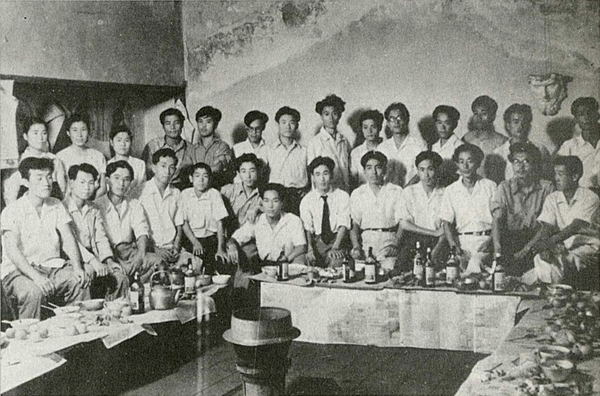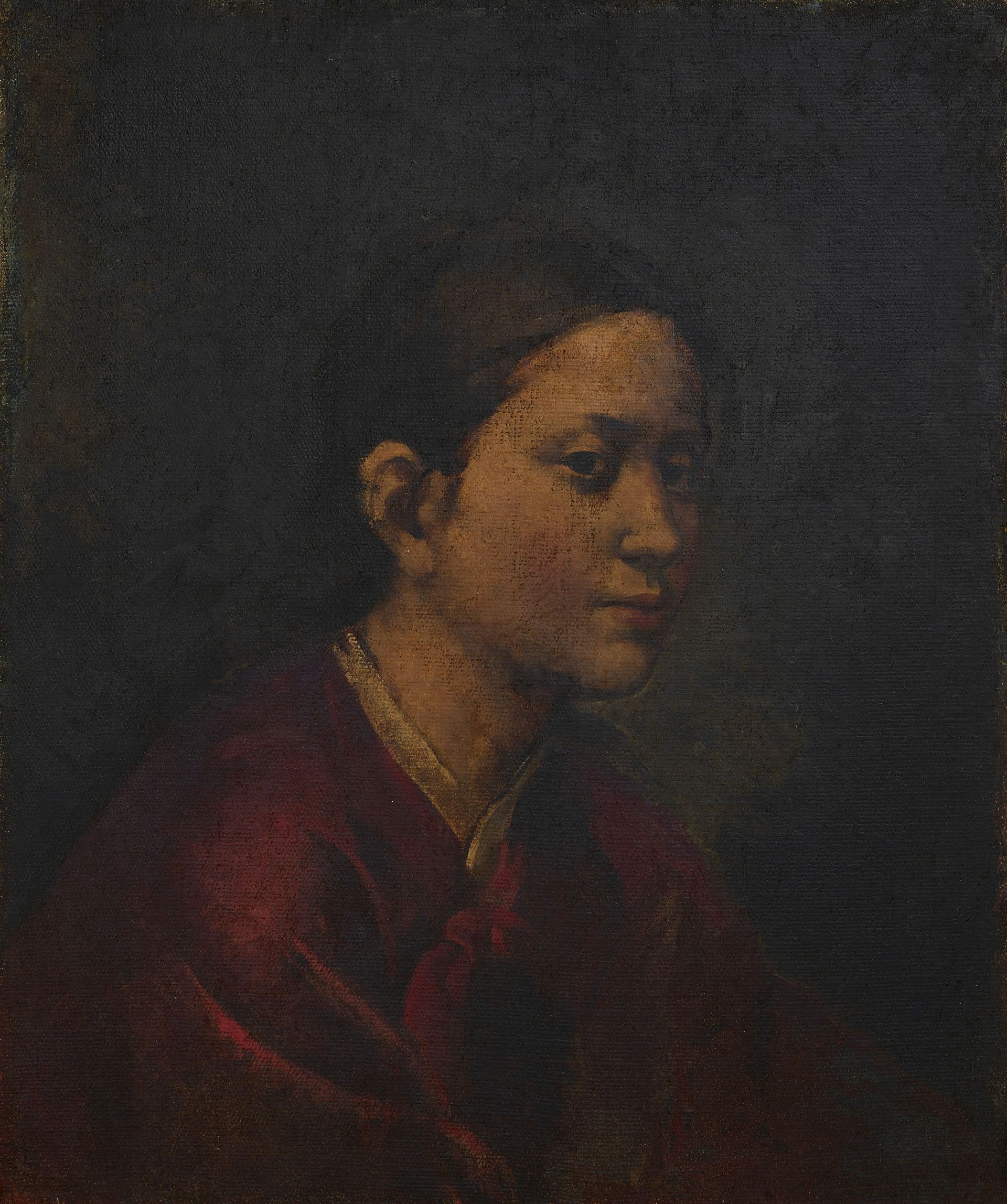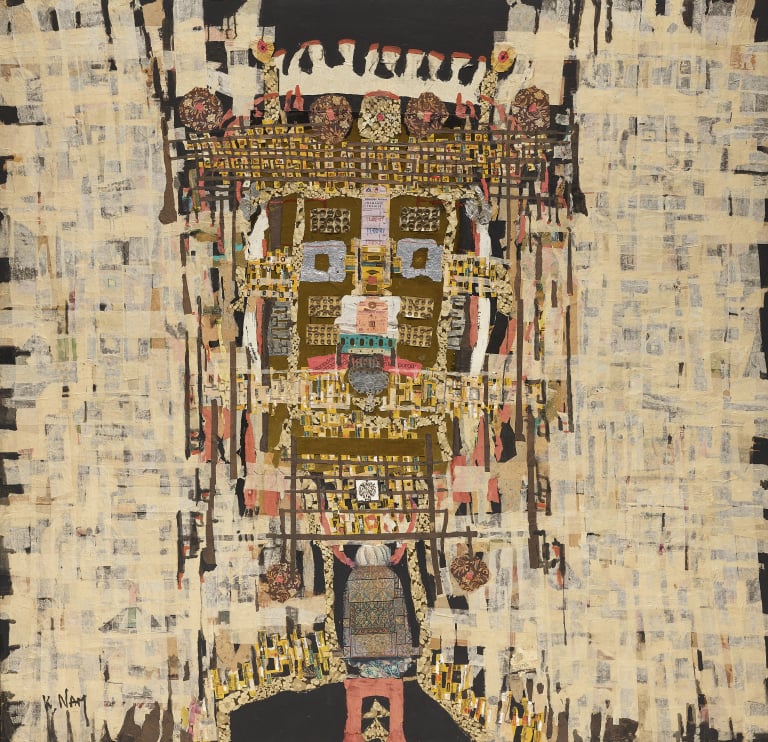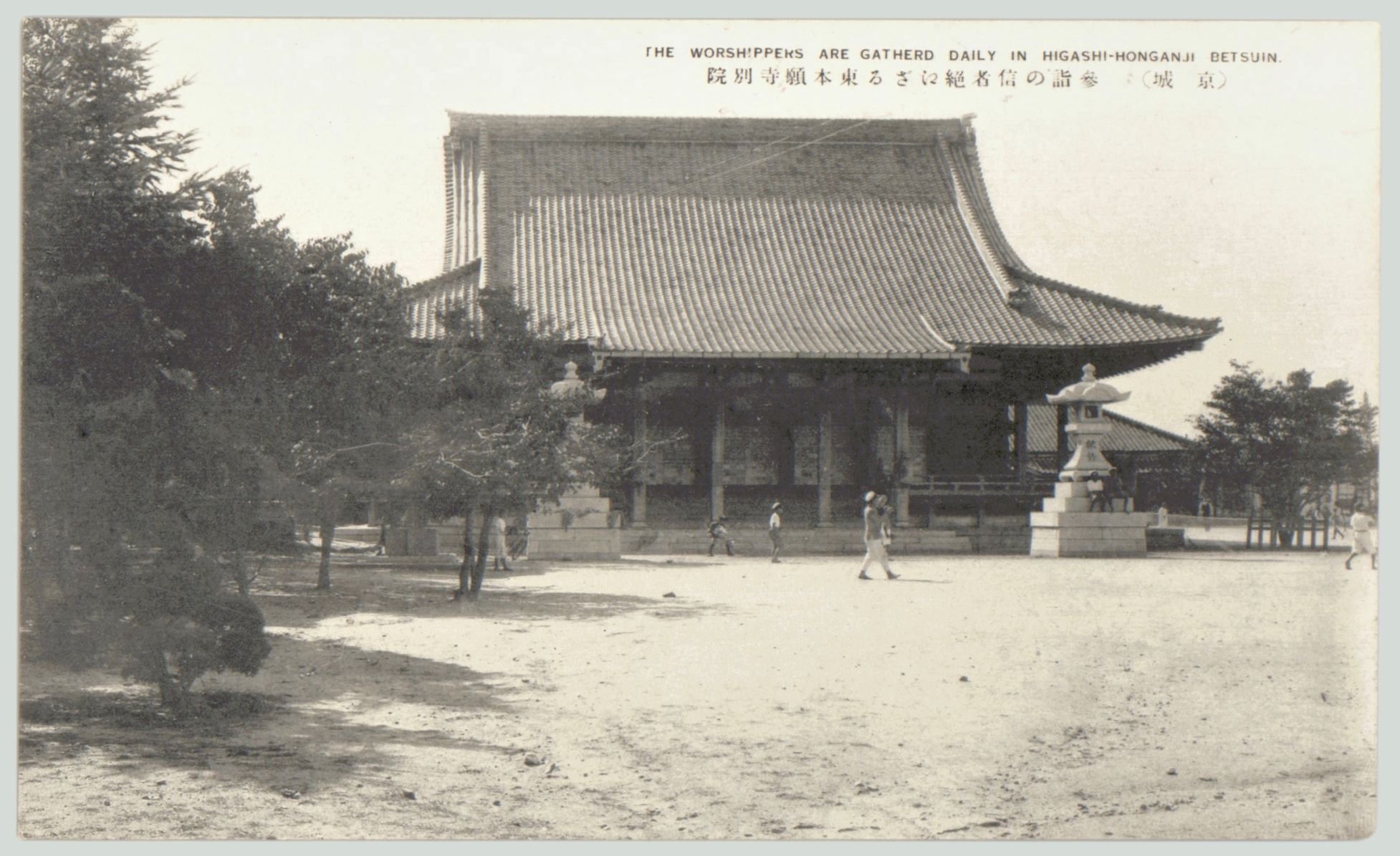
Inaugural Photo of the Seongbuk Painting Academy, September 1947, unknown
Seongbuk Painting Academy
* Source: Multilingual Glossary of Korean Art. Korea Arts Management Service
Related
-

Lee Qoede
Lee Qoede (1913-1965) was born in Chilgok, Gyeongsangnam-do as the second son of a wealthy landowner family. He was strongly influenced and supported by his brother, leftist intellectual Lee Yeoseong and specialized in the history of art, clothing, and folklore. He graduated from Soochang Elementary School in Daegu in 1928, Whimoon High School in 1933, and the Department of Western Painting at the Teikoku Art School in Japan. His works, such as Fate (1938), Night Picnic (1939), and Swing (1940), were selected for the Nikakai Exhibition. After his return to Korea, he founded and led the New Artists Association and its exhibitions from 1941 to 1944. After independence, he was appointed as a committee member of the painting division at the Korean Plastic Arts Federation [Joseon johyeong yesul dongmaeng] and a chairman of the Western Painting division at the Korean Art Alliance [Joseon misul dongmaeng]. After visiting North Korea, he became a centrist and founded the Korean Art and Culture Association [Joseon misul munhwa hyeophoe]. where he was appointed as a chair. In 1948, he joined the National Guidance League. While working as a lecturer at Hongik University, the Korean war broke out, after then and he contributed to the Korean Art Alliance. He escaped Seoul just prior to the 1950 September operation to retake the city but was arrested by the South Korean army and held in prison camps in Busan and Geoje. In an exchange of prisoners, he opted to go to North Korea. In 1988, when the ban on artists who defected to North Korea was lifted, his family revealed his works, such as the People series, A Beggar, and Fate, to the public. He then was re-evaluated as one of the most significant artists in Korean modern art history.
-

Nam Kwan
Nam Kwan (1911-1990) graduated from the Taiheiyo Art School in 1935 and performed research for two further years. He submitted his work to the Ministry of Education Fine Arts Exhibition (Munbuseong misul jeollamhoe), Donggwang Group Exhibition, and the Gukhwa Group Exhibition in Tokyo. In 1954, he attended the Académie de la Grande Chaumièrec in Paris and was invited to submit his work to the Avant-Garde Art Exhibition Salon de Mai and Fleuve Art Gallery. After returning to Korea in 1968, he became a professor at Hongik University. Before he went to Paris, he created portrait and landscape paintings, emphasizing lyrical colors and free expression. While Nam Kwan’s early works tended to focus on figuration, he switched to Oriental style of abstraction, influenced by Parisian Art Informel. In 1962, he experimented with abstract works symbolizing ancient letter inscriptions and after his return to Korea in 1968 he developed a style based on mask abstraction. He liked to utilize abstract letters, lines, and figures using blue as an organising palette. Nam Kwan became a leading figure in the abstract art movement in Korea after independence, and he is particularly well-known for reconfiguring ancient inscriptions as abstract idioms within his work.
-

Lee Insung
Lee Insung (1912-1950) was born in Daegu as the second son in a working class family. He graduated Suchang Elemantary School in 1928 and studied water painting at Seo Dongjin’s Daegu Art Studio. He joined a local art group, Hyangtohoe Association, from 1930 to 1934. He was first selected for the eighth Joseon Art Exhibition [Joseon misul jeollamhoe] when he was 17 years old, followed by consecutive special selections from the tenth to fifteenth exhibitions. He won a Changdeokgung Palace award in 1935 and became a Noteworthy Artist in 1937. He moved to Japan in 1931 to attend evening classes at the Taiheiyo Art School and rigorously focused on developing his art. After independence, he worked as an art teacher at Ewha Womans Middle School in 1945 and was a judge of Western painting at the first National Art Exhibition (Gukjeon) in 1949. He died in an accident during the Korean war in 1950. His work often featured vibrant color and free lines, and a creative structure. He pioneered a new style of art that featured the local color of Korea in original new ways.







